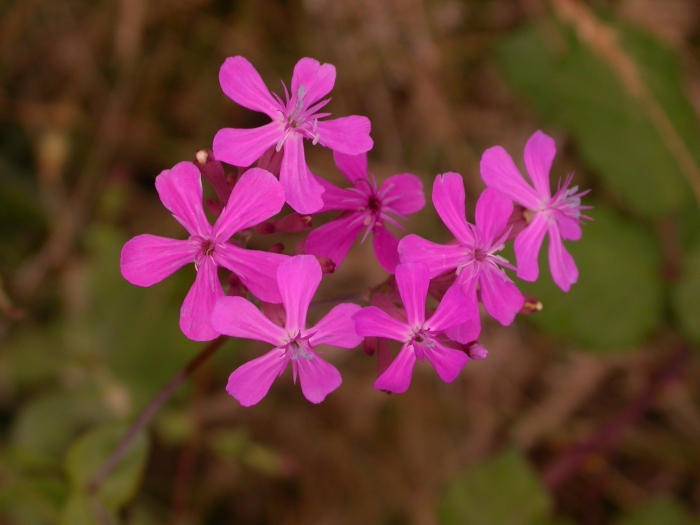Sweet William Catchfly
(Atocion armeria)
Sweet William Catchfly (Atocion armeria)
/
/

Yves Bas
CC BY 4.0
Image By:
Yves Bas
Recorded By:
Copyright:
CC BY 4.0
Copyright Notice:
Photo by: Yves Bas | License Type: CC BY 4.0 | License URL: http://creativecommons.org/licenses/by/4.0/ | Rights Holder: Yves Bas | Publisher: iNaturalist | Date Created: 2007-06-24T09:22:26-07:00 |
















Estimated Native Range
Summary
Atocion armeria, commonly known as Sweet William catchfly, is a perennial herb native to grasslands and open woodlands across Europe. It has become naturalized in parts of the United States, where it is sometimes considered invasive. This species typically grows between 8 and 27 inches tall, with a spread of leaves that are 1-2 inches long, elliptic, oval, or narrowly oval in shape. The plant is known for its clusters of pink or lavender flowers that bloom from June to October in the British Isles, adding a splash of color to the garden landscape.
Sweet William catchfly is appreciated for its extended blooming period and the vibrant colors of its flowers, which can attract pollinators such as bees and butterflies. It is often used in border plantings, rock gardens, and as a ground cover due to its low maintenance requirements. It thrives in full sun to part shade and prefers well-drained soil. While it is drought-tolerant once established, regular watering will promote optimal growth and flowering. Gardeners should be aware of its potential to self-seed and spread beyond its intended area, which can be managed by deadheading spent flowers.CC BY-SA 4.0
Sweet William catchfly is appreciated for its extended blooming period and the vibrant colors of its flowers, which can attract pollinators such as bees and butterflies. It is often used in border plantings, rock gardens, and as a ground cover due to its low maintenance requirements. It thrives in full sun to part shade and prefers well-drained soil. While it is drought-tolerant once established, regular watering will promote optimal growth and flowering. Gardeners should be aware of its potential to self-seed and spread beyond its intended area, which can be managed by deadheading spent flowers.CC BY-SA 4.0
Plant Description
- Plant Type:
- Height: 0.75-1.2 feet
- Width: 0.5-1 feet
- Growth Rate: Moderate
- Flower Color: Pink
- Flowering Season: Summer
- Leaf Retention: Deciduous
Growth Requirements
- Sun: Full Sun
- Water: Low
- Drainage: Fast, Medium
Common Uses
Border Plant, Drought Tolerant, Low Maintenance, Rock Garden
Natural Habitat
Native to grasslands and open woodlands across Europe
Other Names
Common Names: Sand Catchfly , Sweet William Catchfly , Garden Catchfly , Lobel’s Catchfly , Thrift Catchfly , Compact Catchfly
Scientific Names: Atocion armeria , Atocion armeria , Atocion armeria var. sparsiflorum , Atocion armerioides , Atocion armeroides , Cucubalus fasciculatus , Cucubalus glaucus , Lychnis armoracia , Lychnis armoraria , Silene armeria
GBIF Accepted Name: